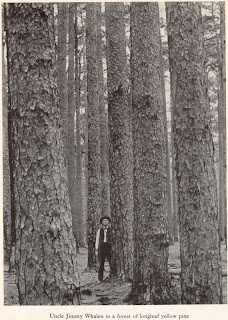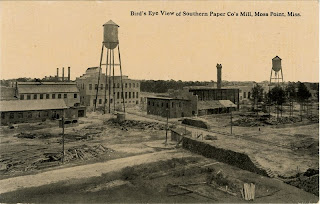Tuesday, June 8, 2010
Saturday, April 10, 2010
USM Moss Point Video Projects
This is a link to video projects made by students at The University of Southern Mississippi in an effort to document oral histories and culture of Moss Point, MS.
http://ocean.otr.usm.edu/~w301497/video_project/moss_point.html
http://ocean.otr.usm.edu/~w301497/video_project/moss_point.html
Thursday, April 1, 2010
Moss Point musician Charles Fairley

From the Mississipi Folklife and Folkartist Directory: In 2003, Charles Fairley was officially recognized by Moss Point with a key to the city, and the Ina Thompson Moss Point Library created the Charles Fairley Music Collection in his honor.
Early Moss Point Economic History





Moss Point is Located on the Mississippi Gulf Coast and blessed with the scenic beauty of its rivers, marshes, and live oaks draped with Spanish Moss. Like many American cities and towns,Moss Point developed at the confluence of two rivers, the Pascagoula and the Escatawpa. It was originally referred to as Mossey Pen Point by the cattle herders that used the Longleaf Pine Forest as grazing areas for their cattle. Mossey Pen Point was considered a comfortable and shady resting place for the men and their herds before transporting the cattle along the rivers.
The site and situation of Moss Point allowed it to become a major player in southern Mississippi's lumber industry. The history of Moss Point is closely tied with the lumber business. In the 1840's, Moss Point became the site of several sawmills that produced lumber from the surrounding Piney Woods area. The above picture of the Longleaf pine forest shows the virgin forest that existed from the Carolinas southeast to Texas. By the late 1890's, Moss Point was the largest exporter of pine lumber in the world.
After the Longleaf Pine was virtually erased from the Mississippi landscape, Moss Point beacame home to paper mills that used remnants of the cut forest and secondary growth pines to make kraft paper.
Moss Point was incorporated in 1901 and moved on to become an "industrial city" comprised of paper mills and a shipbuilding industry. Moss Point is a city that initially prospered due to the extraction of natural resources, but characteristic of these traditional development practices, Moss Point has experienced a boom and bust economy.
Many people around Moss Point believe that natural resources again might be key to economic development, but this time in a sustainable manner that conserves and protects the beauty and biodiversity of the region.
Friday, March 26, 2010
Thursday, March 25, 2010
Scenes around Moss Point
The location of Moss Point is truly its greatest asset. The Pascagoula and Escatawpa Rivers are notable natural resources. The Pascagoula River has the distinction of being the largest unaltered and unobstructed river in the United States and the Escatwapa was named one of the most pristine black rivers in America. Earlier economic development plans sought to capitalize on these factors and promote Moss Point as an area for eco-tourism. Although these plans did not fully come to fruition, local advocates did succeed in the establishment of an Audubon Nature Center, one of only two in the state of Mississippi. The Center promotes the education of residents on natural resource conservation, the importance of native plants, rain gardens, and composting.
Saturday, February 27, 2010
I am interested in the city's efforts to incorporate sustainability concepts into their community. Moss Point is proud of its natural beauty and heritage. Overcoming challenges to develop in a sustainable manner that does not compromise natural resources and quality of life is an ongoing process.
In the future, I plan to add oral histories to this blog in hopes of preserving the first hand knowledge and experiences of Moss Point residents over the years.
Please leave comments. If you have historical places of interest or photos that you would like to add, let me know.
Subscribe to:
Posts (Atom)




